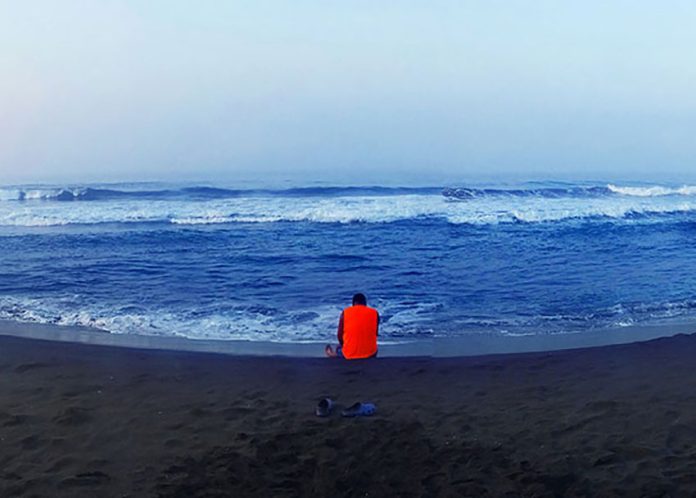So I received a text message during the last week in October: “Richard says Cuyutlán in Colima has the best black-sand beach he’s ever seen and an incredible surf. Want to go?”
Since Richard is a geologist, I figured this was one place I didn’t want to miss.
“I’m in!” I texted back.
I then tried to invite another friend — not a geologist — to join the expedition.
“Why would you want to go to Mexico’s worst beach?” he replied. “Count me out, but if you do go, don’t miss the local ecological center. They’re doing amazing things.”
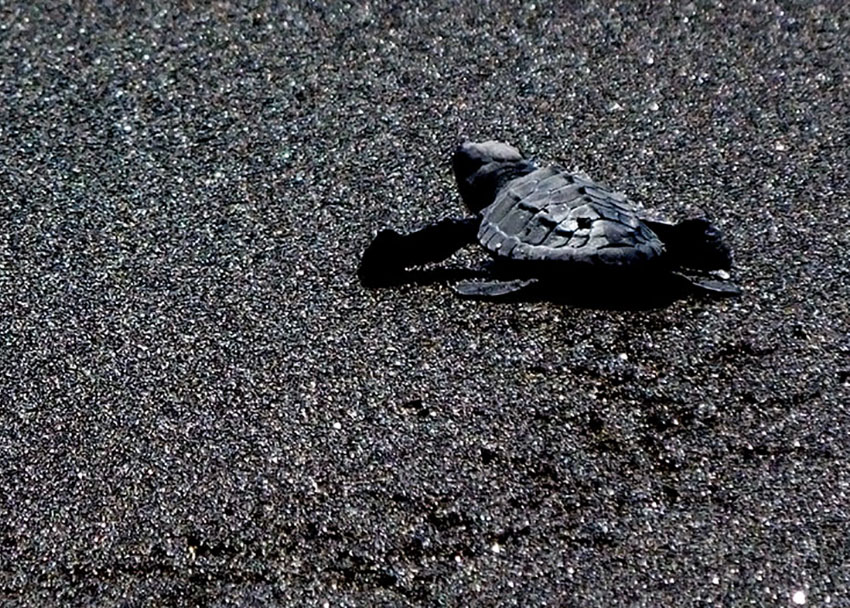
This only piqued my curiosity, so off we drove to Cuyutlán, which lies 200 kilometers southwest of Guadalajara. Three hours later, we arrived, stepped out of the car and gasped.
“Holy cow!” exclaimed my friend Josh, “This town is a sauna!”
The temperature was 34 C with 82% humidity. It felt like we had walked right into the steamiest corner of a Turkish bath.
We wandered about the town, looking for a hotel, figuring that with a beach only a geologist could love, plenty of rooms would be available. Quite the opposite. Only one hotel had vacancies, and it was rather seedy.
Sad to say, the whole town doesn’t look too great, but I was told this is because the coast of Cuyutlán was affected by a powerful earthquake in 2003. Apparently, the town was devastated and simply never recovered. And, indeed, everywhere we looked, we could see the abandoned shells of once-grandiose hotels and spas.
Having secured somewhat smelly rooms in one of those hotels not quite ready for abandonment, we went to check out the beach.

The sand was indeed as black as what you’d find inside a volcanic crater, probably consisting of small particles of basalt. The surf was so high, and the pounding waves so ferocious, that I did not see a single soul in the water the whole time I was there, neither by day nor by night. I had imagined we’d spot a surfer or two out there, actually enjoying those treacherous waves, but perhaps they were all discouraged by the big “Danger! Manta Rays!” signs prominently displayed up and down the beach.
Accepting the fact that we were not going swimming on this trip, we headed the following morning for the turtle sanctuary (tortugario) located just three kilometers southeast of Cuyutlán via an easily drivable road.
At the entrance to Centro Ecológico de Cuyutlán, we came upon the place’s director, Maricruz Rivera. She told us about the center and about El Tortugario, the name of the turtle sanctuary within the center.
“This is a wildlife management site dedicated to education and research,” she told us. “We feel it’s important that people should not look at us as a tourist attraction. In reality, our center is involved in many wildlife conservation and protection projects. For example, we are responsible for protecting 30 kilometers of Pacific Coast beach. During the period when turtles come to lay their eggs, it’s our job to collect and transfer them to a place where they can incubate in complete safety. On average, 2,000 female turtles make their nests here every year, and this center has been assisting and protecting them for 26 years.”
Rivera told us that the workshops they give, both to students and to the general public, have opened the eyes of locals.
“Knowledge and understanding of these creatures have awakened love and respect for them. Everybody living around here is convinced they have to protect them.”
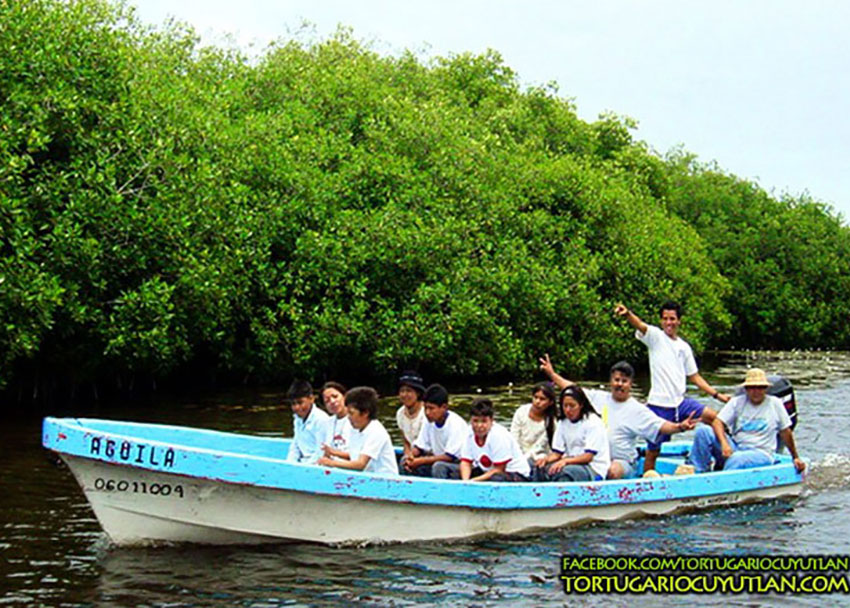
The center has a staff of eight biologists to watch over their 30-kilometer stretch of beach. I was surprised to learn that these ecologists receive no outside funding of any kind and that the whole operation depends on the admission fee people pay to visit the place and to go on a boat ride into the estuary right next to the turtle sanctuary.
We immediately signed up for that boat ride.
A few minutes later, we found ourselves seated in a big panga (skiff), silently gliding through a tunnel in a dense forest of mangroves. Suddenly we emerged into the bright Palo Verde Estuary, a favorite place for local fishermen, according to our guide. He told us that the tide sometimes carries big ocean fish into the estuary and leaves them stranded there, where they are dead easy to catch.
The water in the estuary is only about 30 centimeters deep. For an hour, our boatman navigated by following two-meter deep channels that our eyes could not detect.
What our eyes could detect, however, were waterbirds of all kinds — egrets, cormorants, anhingas, great blue herons, ospreys, frigate birds, black-necked stilts, roseate spoonbills, and, of course, crocodiles, some of which were all of four meters long.
During our panga ride we learned that this estuary houses both white and red mangroves. The red ones turned out to be really curious, as their new roots come out of their highest branches and then grow straight downward until they finally reach the water and the thick layer of mud beneath it.
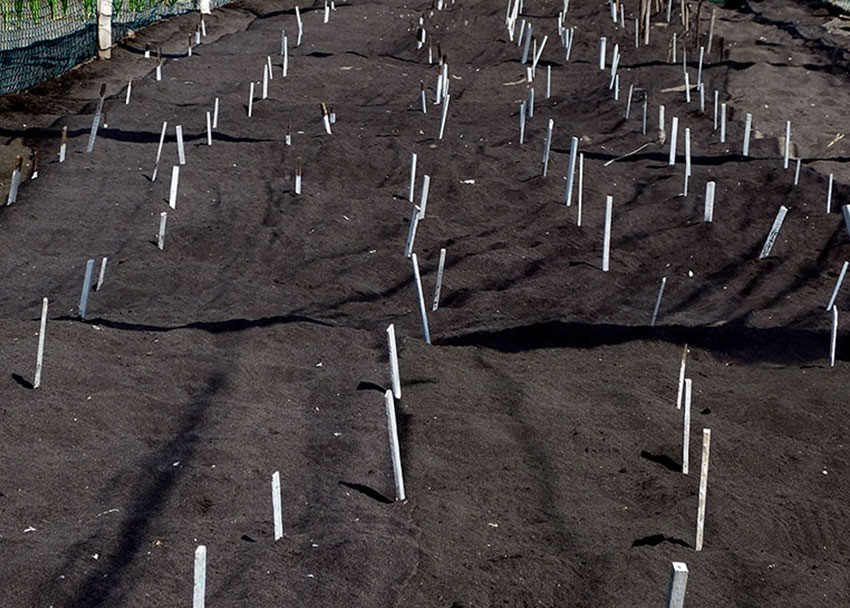
After the boat ride, it was time for a turtle release, which typically takes place on Saturday afternoons. Because visitors to the sanctuary release the baby turtles, this event is very popular with kids.
Three kinds of sea turtles come to lay their eggs on the beaches of Colima: green turtles, olive ridley turtles and leatherbacks. It’s the leatherback sea turtle you’ll be releasing if you visit the Cuyutlán Tortugario. Amazingly, the tiny creature in the basket they give you is destined (if it survives) to grow into the largest species of turtle in the world.
The leatherback sea turtle is so called because it is covered with skin instead of a bony shell. The biggest verified specimen ever found measured over two meters in length and weighed 650 kilos.
At night, newly hatched sea turtles rely on light to find their way to the ocean. In a natural setting they would easily distinguish between the glow over the ocean and the dark silhouette of hills or jungle inland. Today, however, bright streetlamps and hotel lights do great damage to a multitude of species. Perhaps the worst example is how artificial lights along the sea coast lead baby turtles to their deaths.
At the sanctuary, the tiny turtles are released during daylight hours and, thanks to the careful procedures which the releasers must follow, all of them make it into the water, even though the strong surf may throw them back a few times.
Comments Maricruz Rivera, “I’m proud to say that since our founding, we have successfully released over 2 million turtles.”
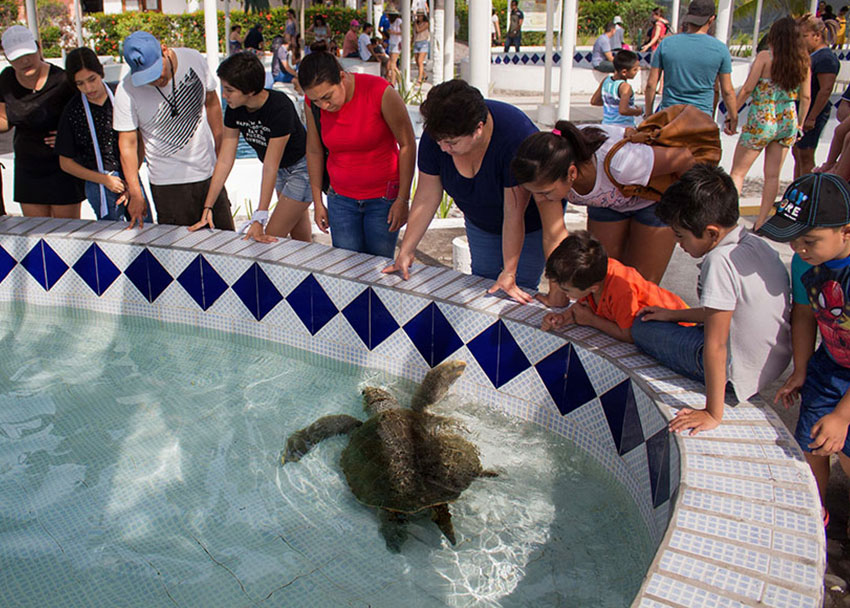
Following all the proper pandemic protocols, El Tortugario is open daily (except Wednesdays) from 9 a.m. to 5 p.m.
Before leaving Cuyutlán, we stopped to visit its unusual Salt Museum. Long before the Spaniards arrived in the new world, people were producing salt at Cuyutlán. In fact, they are still gathering and selling it to this day.
So there you have it. A non-geologist might detest Cuyutlán’s sizzlingly hot black beach, but there are things to do in this little town. People also tell me that the seafood is great. Just hold off your visit until winter, when it won’t feel like you’re in a sauna.
[soliloquy id="127821"]
The writer has lived near Guadalajara, Jalisco, for 31 years, and is the author of “A Guide to West Mexico’s Guachimontones and Surrounding Area” and co-author of “Outdoors in Western Mexico.” More of his writing can be found on his website.
